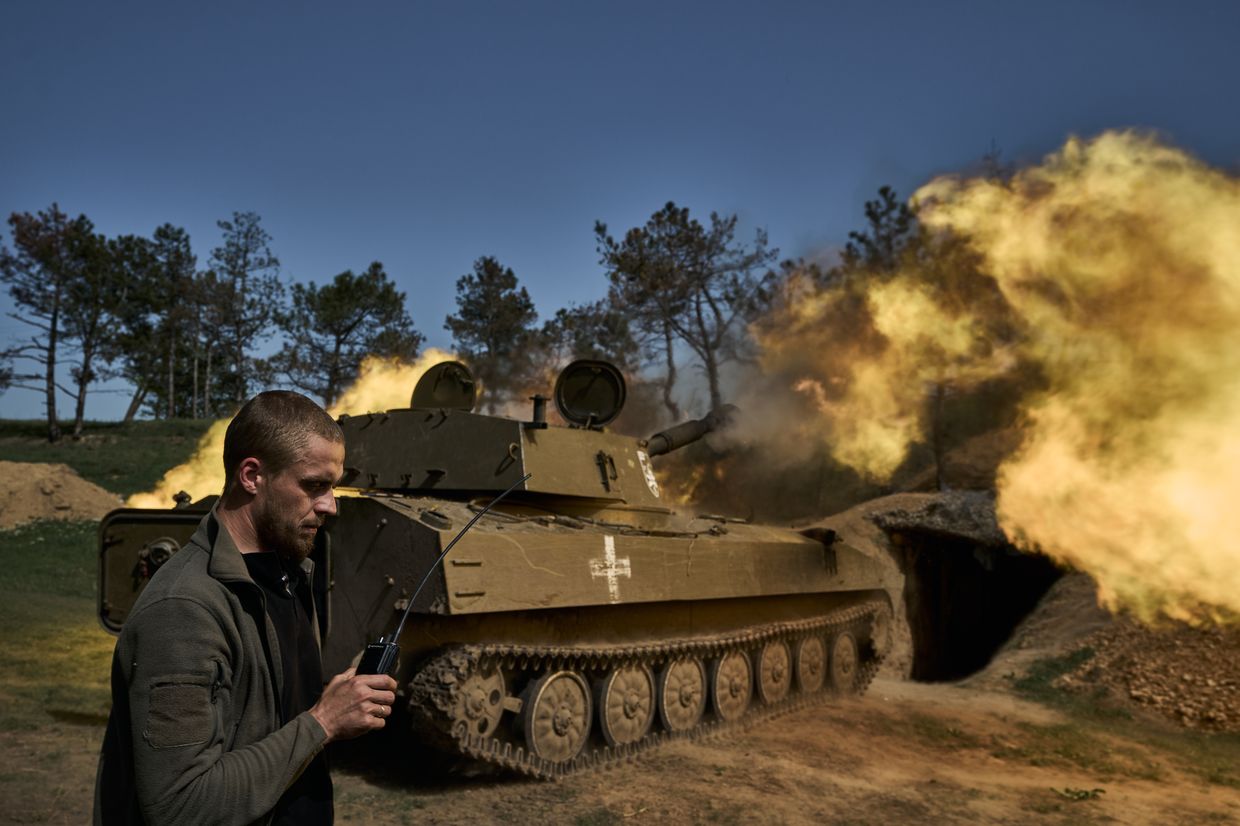Ukraine war latest: Kyiv braces for Russian push near Orikhiv in Zaporizhzhia Oblast

Key developments on Oct. 6:
- Ukraine braces for Russian push near Orikhiv in Zaporizhzhia Oblast in coming days
- Kyiv shows destruction of Russian Osa anti-aircraft system with FPV drone
- NATO considering 'concrete steps' on Ukraine's accession at Ramstein summit, WP reports
- Lithuania confiscates military goods from Kaliningrad-Moscow trains, gives them to Ukraine
Russian forces are massing for a breakthrough in the direction of Orikhiv and Mala Tokmachka in Zaporizhzhia Oblast in the coming days, Southern Defense Forces spokesperson Vladyslav Voloshyn said on air on Oct. 5.
This comes as another warning of a potential Russian push in the southern Zaporizhzhia Oblast just as Moscow's troops continue advancing in Ukraine's east.
"If they achieve a breakthrough, Russia will be able to fire at logistical routes connecting Zaporizhzhia to the east of Ukraine," Voloshyn said.
"Russia will try to succeed at any cost to cut off our logistics." Ukrainian intelligence shows that Russian forces are amassing personnel and logistical support in the area, and "in a few days, they will likely start new offensive operations," the spokesperson noted.
Voloshyn expects Russia to deploy small assault groups backed by armored vehicles.
Orikhiv is a Ukrainian-held town roughly 50 kilometers (31 miles) southeast of the regional center, Zaporizhziha, and roughly 10 kilometers (6 miles) north of the front line.
The area was the main axis of Ukraine's southern counteroffensive in 2023, which led to the liberation of the settlement of Robotyne but achieved no major breakthrough.
Russia intensified its attacks in the south earlier this year, claiming to recapture Robotyne. Ukraine has repeatedly denied this claim.
Voloshyn warned that Moscow is "amassing personnel" in Zaporizhzhia Oblast on Sept. 28. The spokesperson said then that Russia is readying a new maneuver near the occupied village of Pryiutne but added that a full-blown offensive would require larger numbers.
Ukraine shows destruction of Russian Osa anti-aircraft system with FPV drone
Ukraine's military intelligence (HUR) unit Kryla ("Wings") destroyed a Russian air defense system Osa with a first-person view (FPV) drone, the agency said on Oct. 6.
A drone worth "several hundred dollars" was used to destroy an automated air defense system worth $10 million, the intelligence agency noted.
Developed in the Soviet Union in the 1960s, the 9K33 Osa (SA-8 Gecko according to NATO terminology) is a highly mobile, short-range, low-altitude surface-to-air missile system still in use by Russia, Ukraine, and a dozen other countries.
HUR released a video showing footage of the FPV drone ramming into the Russian weapon system and then separate drone footage of the burning equipment.
HUR released a video showing footage of the FPV drone ramming into the Russian weapon system and then separate drone footage of the burning equipment.
The agency did not provide any further details, including when or where did the strike take place.
Russia has lost 970 air defense systems since the outbreak of the full-scale invasion of Ukraine, the General Staff of the Ukrainian military said earlier on Oct. 6 before the military intelligence agency's announcement.
The Osa has been used with great effect by the Russian Armed Forces against Ukrainian drones, with some experts linking it to Ukraine scaling down the use of its once-popular Bayraktar drones.
The system functions as an all-in-one transporter erector launcher and radar (TELAR) vehicle that can detect and attack enemy targets independently.
The agency did not provide any further details, including when or where did the strike take place.
Russia has lost 970 air defense systems since the outbreak of the full-scale invasion of Ukraine, the General Staff of the Ukrainian military said earlier on Oct. 6 before the military intelligence agency's announcement.
The Osa has been used with great effect by the Russian Armed Forces against Ukrainian drones, with some experts linking it to Ukraine scaling down the use of its once-popular Bayraktar drones.
The system functions as an all-in-one transporter erector launcher and radar (TELAR) vehicle that can detect and attack enemy targets independently.
NATO considering 'concrete steps' on Ukraine's accession at Ramstein summit, WP reports
Ukraine may be offered "more concrete steps" regarding its NATO membership during the upcoming Ramstein summit, the Washington Post (WP) reported on Oct. 6, citing an undisclosed diplomat.
Kyiv hopes to secure additional pledges of assistance during the conference on Oct. 12, which will be the last gathering in this format before the U.S. presidential election in early November.
There are concerns that a return of Republican candidate Donald Trump to the White House could spell a reduction of military aid to Ukraine and an obstacle to the country's NATO aspirations.
According to the diplomat quoted by the WP, NATO members are considering a more definitive proposal regarding the accession, but it will likely fall short of what Kyiv has asked for.
Despite a pledge at the NATO summit in Washington that its membership path is "irreversible," Ukraine is yet to receive a definitive invitation.
Kyiv revealed that an alliance membership is a key part of a victory plan President Volodymyr Zelensky pitched to the U.S. leadership in September.
Zelensky will again present the plan, in which Washington identified "a number of productive steps," to the other allies at the Ramstein summit.
During his U.S. trip, the Ukrainian president also lobbied for lifting restrictions on strikes deep inside Russia with Western arms, but no such decision has been made so far. In spite of this, the diplomat told the WP that Kyiv may receive some sort of support during the Ramstein meeting later this month.
Lithuania confiscates military goods from Kaliningrad-Moscow trains, gives them to Ukraine
Lithuanian customs officers discovered military uniforms and camouflage nets on passenger trains traveling from the Russian exclave of Kaliningrad to Moscow, the Delfi outlet reported on Oct. 5.
Kaliningrad Oblast is a small but heavily armed territory lodged between the Baltic Sea and NATO members Poland and Lithuania.
Lithuanian authorities are regulating the railway connection segment that runs through their territory and connects the exclave to Belarus and Russia.
During inspections, Lithuanian authorities intercepted four shipments of various military items loaded onto passenger trains between Sept. 27 and Oct. 2, Delfi wrote.
The shipments included five pairs of military camouflage trousers and several camouflage nets for masking weapons, which were found at the Kybartai train station near the exclave's border.
Vilnius believes that the shipments were intended for use by the Russian Armed Forces deployed in Ukraine. The items will be sent to Ukraine as military aid.
Vilnius has been a staunch supporter of Ukraine since the outbreak of the full-scale war, leading to the sharp deterioration of relations with Moscow.
Another incident on the Kaliningrad-Moscow railway occurred last week. One carriage of a train that arrived at the Kena checkpoint at the Lithuanian-Belarusian borders displayed the letter Z, a symbol commonly used by Russian invasion forces in Ukraine.
Another carriage displayed an inscription calling Vilnius, Lithuania's capital, a "Russian city."
The Soviet Union annexed Lithuania along with other Baltic countries in World War II, with the nation declaring independence only in 1990.















